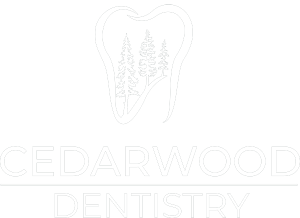Understanding the difference between dental veneers and bonding is crucial for anyone considering cosmetic dental treatments to enhance their smile. Both procedures offer effective solutions for improving the appearance of your teeth – from hiding chips, to filling in gaps between teeth and more. But dental veneers and dental bonding come with distinct characteristics and life spans to consider.
The Difference Between Dental Veneers and Bonding in Procedure and Application
Dental veneers are thin, custom-made shells crafted from porcelain or composite resin that cover the front surface of your teeth. The process involves removing a small amount of enamel to accommodate the veneer, ensuring a perfect fit and natural look. This procedure is ideal for addressing a range of aesthetic concerns, including discoloration, chips, and gaps to provide a complete smile transformation. Veneers can be applied to as few as one tooth to as many as your whole upper and lower bridge. Porcelain veneers take a bit longer to prepare as they are created in a lab whereas composite veneers can be created right in your dentist’s office.
Dental bonding uses a tooth-colored composite resin applied directly to the tooth’s surface. The resin is shaped and polished to blend seamlessly with the surrounding tooth. Bonding requires minimal tooth preparation compared to veneers, making it a less invasive option. It’s particularly well-suited for minor cosmetic changes, such as filling chips or closing small gaps between teeth.
Lifespan and Durability of Dental Veneers vs. Dental Bonding
When it comes to longevity, veneers outperform dental bonds, whose lifespan is 5-7 years, although they can last longer. Dental bonding, while effective, is not as strong as the materials used for veneers, making it more susceptible to staining and chipping over time.
Veneers, on the other hand, can last 10 to 15 years or more, especially when properly cared for. Porcelain veneers are known for their durability and resistance to stains, contributing to their longer lifespan.
Dental Bonding vs. Veneers: Selecting the Best Procedure for You
The choice between dental veneers and bonding often comes down to the individual’s specific needs, age, aesthetic goals, and budget. Veneers, especially porcelain veneers, may require a higher initial investment but offer a longer-lasting solution with a transformative impact on your smile. Bonding, with its less-invasive nature and lower cost, is an excellent option for those looking for a quick and effective cosmetic improvement. At Cedarwood Dentistry, we recommend adolescent patients address cosmetic dental issues with dental bonding over veneers because a veneer may begin to look outgrown as their mouth and face continue to grow and mature into their mid twenties. However, for fully-grown adults, veneers present a beautiful, and long-lasting solution for many patients wanting to improve the appearance of their smile.
At Cedarwood Dentistry we are dedicated to helping you select the best cosmetic dental procedure for yourself or your family member. We work to educate our patients, ensuring you make the best choice for your smile and dental health. Contact us today to start your journey toward smile satisfaction.




